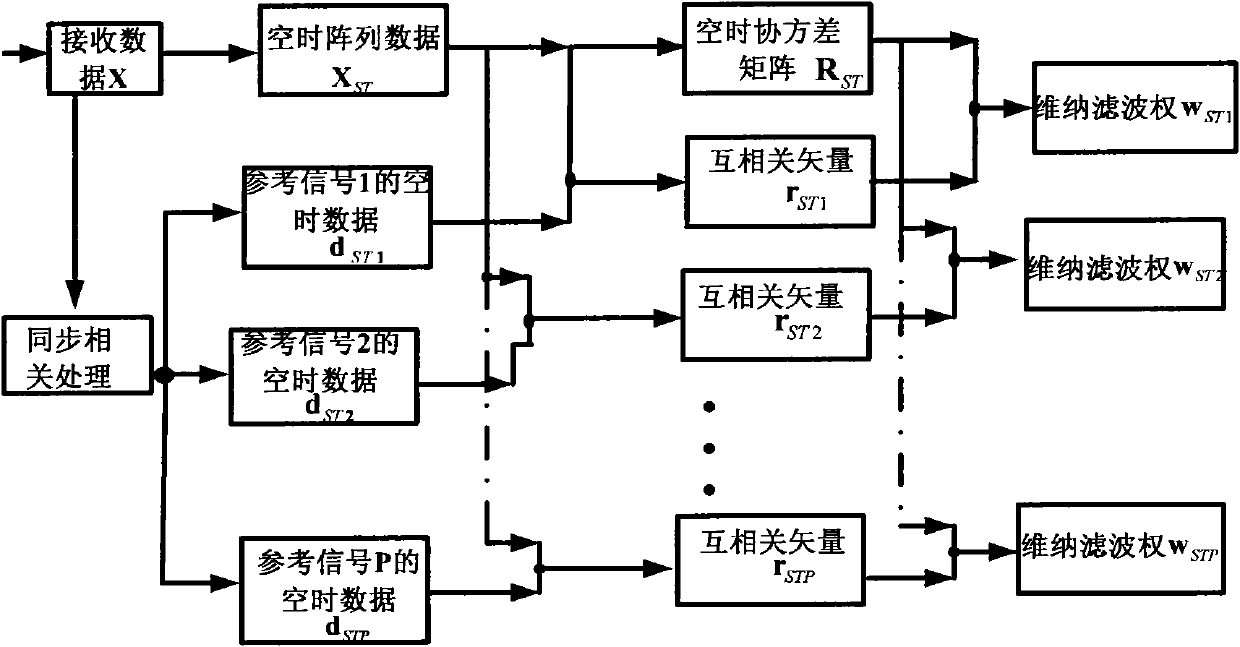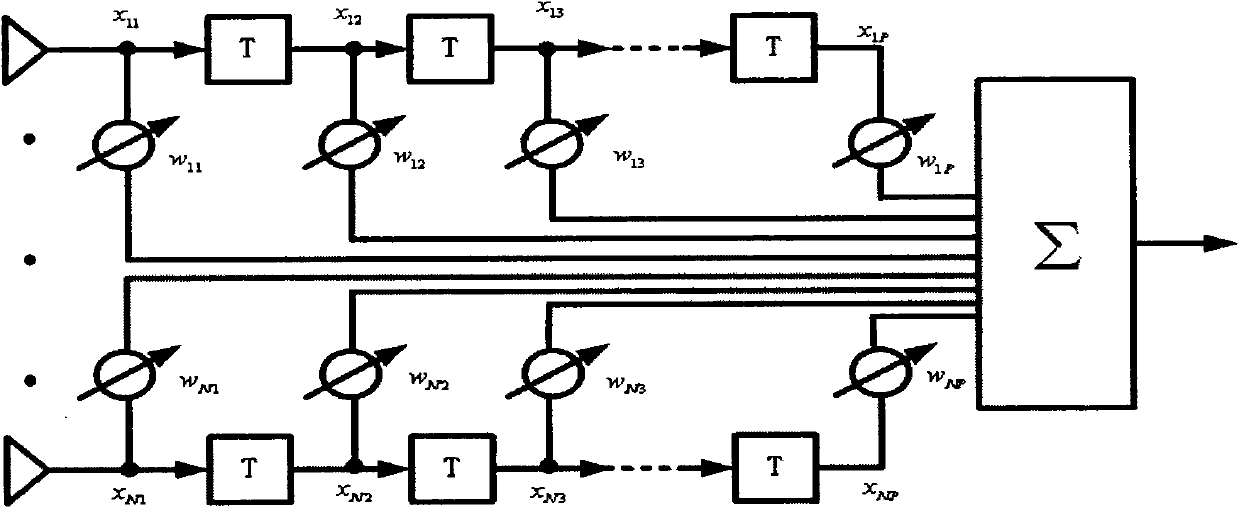Space-time blind self-adapting anti-jamming method based on waveform characteristics
A blind self-adaptive, space-time technology, applied in the field of signal processing, can solve the problems of inconsistent array element patterns, difficult engineering implementation, mutual coupling between array elements and channel amplitude and phase errors, and achieve easy multi-beam forming and easy separation. , the effect of improving the robustness
- Summary
- Abstract
- Description
- Claims
- Application Information
AI Technical Summary
Problems solved by technology
Method used
Image
Examples
Embodiment Construction
[0022] refer to figure 1 , the realization process of the present invention is as follows:
[0023] In step 1, the received data of each array element is preliminarily anti-jammed through the inversion method of the spatial sampling covariance matrix, and the correlation peak is synchronized, and the reference signal is adjusted by using the correlation peak so that the received data of the array element is synchronized with the reference signal.
[0024] (1.1) Using LCMV optimization criteria min w w H Rw s . t . w H f = 1 The optimal weight for obtaining the inversion method of the spatial sam...
PUM
 Login to View More
Login to View More Abstract
Description
Claims
Application Information
 Login to View More
Login to View More - R&D
- Intellectual Property
- Life Sciences
- Materials
- Tech Scout
- Unparalleled Data Quality
- Higher Quality Content
- 60% Fewer Hallucinations
Browse by: Latest US Patents, China's latest patents, Technical Efficacy Thesaurus, Application Domain, Technology Topic, Popular Technical Reports.
© 2025 PatSnap. All rights reserved.Legal|Privacy policy|Modern Slavery Act Transparency Statement|Sitemap|About US| Contact US: help@patsnap.com



